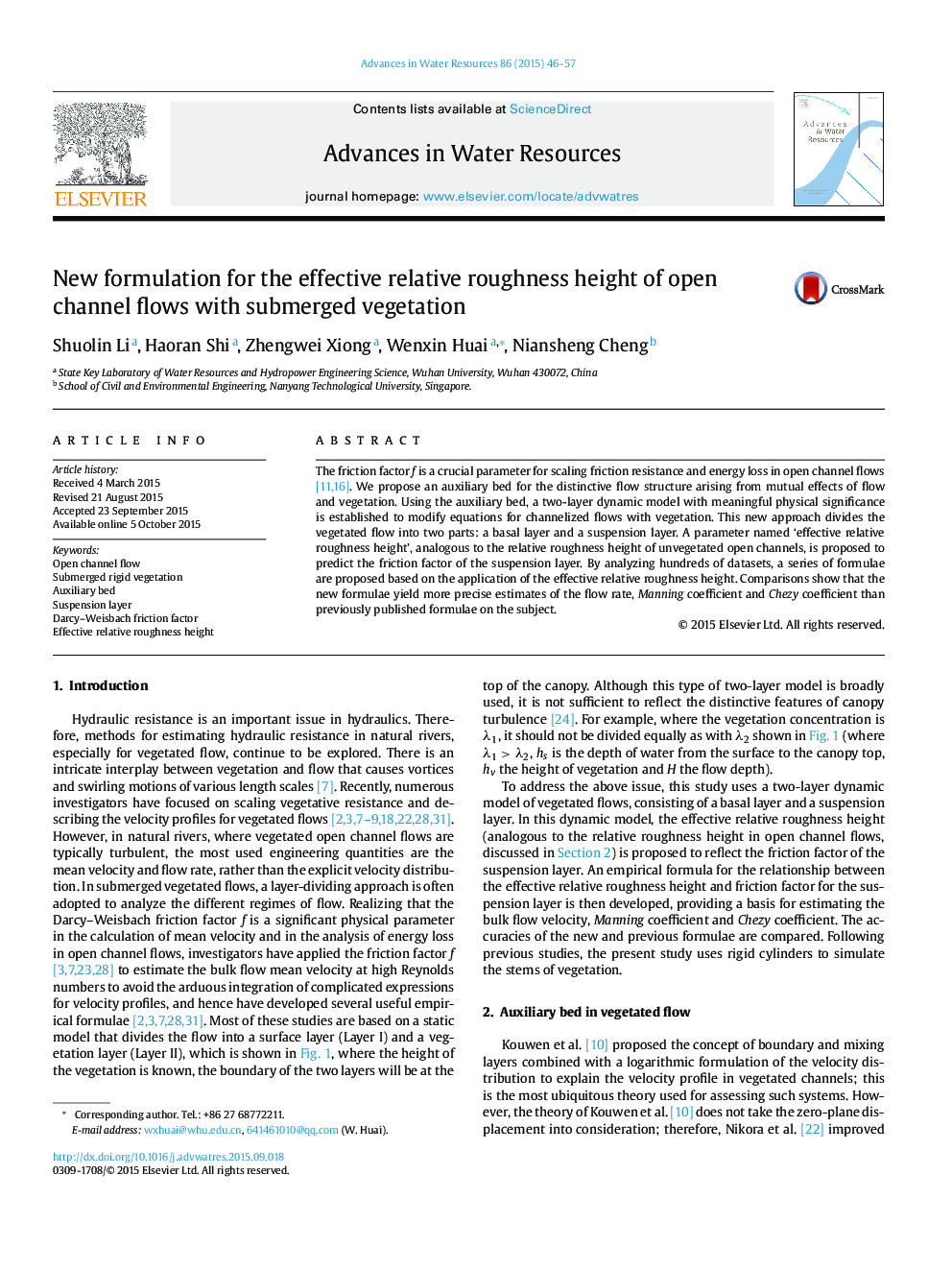| Article ID | Journal | Published Year | Pages | File Type |
|---|---|---|---|---|
| 6380852 | Advances in Water Resources | 2015 | 12 Pages |
Abstract
The friction factor f is a crucial parameter for scaling friction resistance and energy loss in open channel flows [11,16]. We propose an auxiliary bed for the distinctive flow structure arising from mutual effects of flow and vegetation. Using the auxiliary bed, a two-layer dynamic model with meaningful physical significance is established to modify equations for channelized flows with vegetation. This new approach divides the vegetated flow into two parts: a basal layer and a suspension layer. A parameter named 'effective relative roughness height', analogous to the relative roughness height of unvegetated open channels, is proposed to predict the friction factor of the suspension layer. By analyzing hundreds of datasets, a series of formulae are proposed based on the application of the effective relative roughness height. Comparisons show that the new formulae yield more precise estimates of the flow rate, Manning coefficient and Chezy coefficient than previously published formulae on the subject.
Keywords
Related Topics
Physical Sciences and Engineering
Earth and Planetary Sciences
Earth-Surface Processes
Authors
Shuolin Li, Haoran Shi, Zhengwei Xiong, Wenxin Huai, Niansheng Cheng,
